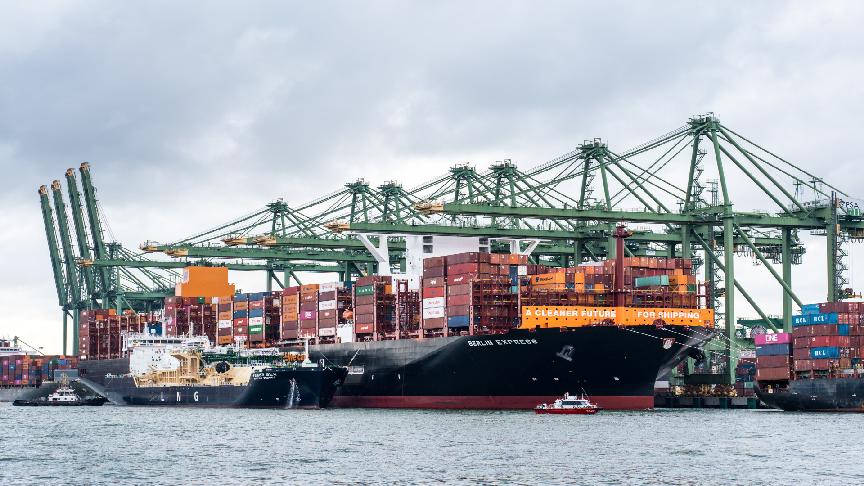14 May 2024 (Lloyd's List) - US president Joe Biden announced tariff hikes on some $18bn worth of Chinese goods on Tuesday, as Washington accused Beijing of unfair trade practices.
The move raises prospects of an escalatory trade tiff that could spell pain for shippers, supply chains, and US consumers. China’s ministry of commerce blasted the decision and said China “will take resolute measures to defend its rights and interests”.
The items ranged from electric vehicles, which would see the tariff rate rise from 25% to 100% this year, to ship-to-shore cranes, which would be subject to a 25% tariff. Other goods facing hikes include steel and aluminum, facemasks, and semiconductors, among others. The timelines for implementation of the tariff hikes varied between goods, with some set to see increases this year, and others through 2026.
The imposition of a wide array of tariffs in 2018 under former US president Donald Trump and the ensuing tit-for-tat with China saw ocean freight rates surge by 160%, according to Xeneta chief analyst Peter Sand, who warned history may be repeating itself.
“Rates began to fall away again towards the end of 2018 as the situation calmed, but they never returned to the same level, meaning a new status quo was established in the market at a higher cost level,” he said in a report.
Sand said that while $18bn is not a “huge amount in the grand scheme of US trade”, if Beijing responds in the same manner as it did in 2018, the US and China could enter another spiral of escalating tariffs.
“That will mean yet more pain for shippers and ocean freight service providers to deal with,” he warned.
The new tariffs may entice shippers to find alternatives routes into the US, including through its southern neighbour Mexico, Sand said. Mexico surpassed China as the US’s largest import partner by value in 2023 for the first time in 20 years, according to the Bureau of Economic Analysis, a US government agency.
Sand noted a 34% year-on-year increase of containerised imports from China into Mexico in the first quarter of this year, which has fuelled speculation that the country is serving as a “backdoor” tothe US.
“The ocean freight container market has seen incredible increases in demand from China into Mexico and the latest US tariffs could see this rapid growth continue,” Sand said.
He added: “We may also see US shippers look to import goods from nations such as Vietnam as an alternative to China - as has increasingly been the case since the 2018 tariffs hike hit the market.”
However, these options entail other risks for shippers.
“These are immature supply chain routes compared to the established transpacific trade direct from China to the US west coast. This means more complexity, more volatility and increased cost,” Sand said.
Popular protectionism
The White House framed the tariffs as part of Biden’s economic push to create “good jobs in key sectors that are vital for America’s economic future and national security”.
“China’s unfair trade practices concerning technology transfer, intellectual property, and innovation are threatening American businesses and workers,” the White House said on Tuesday.
While the tariffs were said to be in retaliation to China’s anticompetitive behaviour, protectionist measures are popular in Washington and enjoy support across both sides of the isle – and with voters. With a presidential election looming, candidates have an added incentive to flex their protectionist muscles and to show voters their “strength” on China.
The tariffs were announced following the conclusion of a statutory four-year review by the office of the US Trade Representative under Section 301 of the US Trade Act of 1974 that examined the impact of US tariffs on China’s behaviour.
Notably, the decision to impose tariffs on ship-to-shore cranes comes amid increased scrutiny by the White House. Policymakers have warned that Chinese-manufactured cranes pose cybersecurity risks, with the US planning to invest billions of dollars to revive domestic crane manufacturing.
“With respect to ship-to-shorecranes, increasing section 301 duties may be appropriate to support the security interests of the United States from the threat of Chinese state-sponsored cyber intrusions of critical infrastructure,” the USTR report argued.
Overall, USTR ambassador Katherine Tai said that tariffs have proved effective in “encouraging” China to “take some steps” to address issued identified in the investigation but said further action is required.
However, the National Retail Federation, a US trade group, disagreed that the tariffs were helping change China’s behaviour, and said it was “extremely disappointed” with the USTR’s tariff review.
“As consumers continue to battle inflation, the last thing the administration should be doing is placing additional taxes on imported products that will be paid by US importers and eventually US consumers,” executive vice president of government relations David French said in a statement.
“The ongoing Section 301 China tariffs have not worked to force China to change its trade practices. We need a new strategy that will address the core issues and provide actual incentives for US companies to shift their supply chains from China.”
Separately, the USTR recently launched an investigation probing China’s maritime sector.






